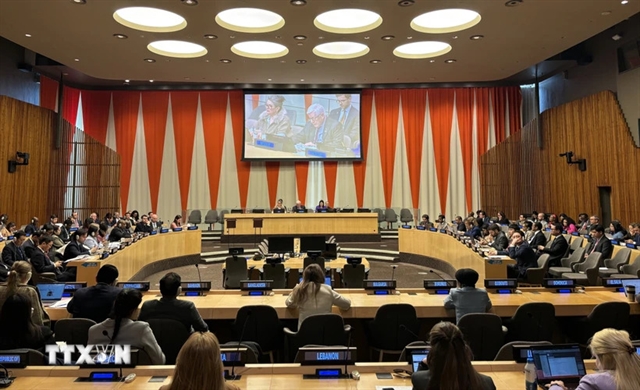 Life & Style
Life & Style

No one can predict when an emergency will strike, but with a little foresight or planning we can minimize the damage. Dr. Mathieu Nalpas discusses some common emergencies that can occur on the streets or at home and how to deal with them.
69724531PM.JPG) |
| Doctor Mathieu Nalpas.—Photo courtesy of Family Medical Practice Hanoi. |
By Dr. Mathieu Nalpas
No one can predict when an emergency will strike, but with a little foresight or planning we can minimize the damage. We will discuss some common emergencies that can occur on the streets or at home and how to deal with them.
What to keep at home
Key emergency numbers in your area.
It is important to post these emergency contact numbers on your refrigerator/door so that they are clearly visible.
The number must include:
Clinics [for example: FMP Hanoi: 0438430748]
Trusted friends
Emergency Medical Response Services [for example: Ho Chi Minh City: * 9999]
Fire brigade: 114
Police: 113
English is spoken by all services
Analgesics for pain and fever, especially if you have children. Temperature over 38 degrees Celsisus is defined as fever. Use paracetamol to bring down the fever, which must always be kept in the house. When the cause of the fever is unknown, it is better to use paracetamol (PANADOL, TYLENOL) rather that anti-inflammatory medicine.
What to remember
As soon as it is feasible, familiarise yourself with the areas where you live, work, shop and spend leisure time in Hanoi. Then identify the nearest medical clinic/hospital. Proximity and knowledge of where to obtain emergency help can save time and lives.
Clinic numbers (Memorize them and also store them on your cellphone).
Diarrhea with fever, abdominal pain or vomiting needs medical assessment immediately, especially in children.
Fractures: You or your friend fall off your bike and you (he/she) are in pain. Or you are involved in a traffic accident and are struck by a car or a fast-moving object. The leg or arm looks deformed or twisted. Do not move unless there is immediate danger of further physical harm. Immobilise the limb. Call for help -- either a clinic or friends -- from your mobile. Remain where you are and wait for the ambulance or help to arrive.
If a friend falls over three metres, lands on the head and it is necessary to move for immediate safety, support the head and neck and move the victim in the direction of the head without bending the spine forward. Do NOT drag the victim sideways. Keep the victim quiet and warm. Hold the head still by gently placing one of your hands on each side of the head or place rolled up towels or any other piece of clothing on both sides of the head to keep it immobolised. Then call for the nearest emergency medical service.
Bleeding: Apply direct pressure to the wound. Do not apply the tourniquet above the bleeding point unless you cannot control the bleeding with direct pressure.
Unconsciousness: A family member or friend may become unconscious at home or on a street due to several reasons, including injury, loss of blood, poisoning, severe allergic reaction, diabetic reaction, heart attack, illness, fatigue, stress and not eating. If the victim is unconscious due to injury, he/she needs to be treated for a possible head/neck injury.
Remain calm and assess the situation for safety. Be sure the situation is safe for you to approach. The following dangers will require caution: live electrical wires, gas leaks, building damage, fire or smoke, traffic or violence. If the scene is not safe or at any time becomes unsafe, GET OUT! You will be of no use to that person or anyone else if you get injured too.
If the scene is safe, assess the patient. Quickly observe the victim. Kneel down by the victim and tap or squeeze, not shake, the victim’s shoulder and ask, "Are you ok?" In case of an infant, you may tap the foot. If the victim responds but is badly hurt or appears to be very ill, get bystanders or friends to activate emergency response -- call the clinic/ambulance. If alone, use your mobile.
If the victim does not respond to your tap and shout, you must act quickly. You must first call for an ambulance and then check the victim’s breathing and pulse by looking, listening and feeling. If you cannot hear the breathing or feel the pulse, begin Cardio-Pulmonary resuscitation (CPR).
All age groups are recommended for cycles of 30 chest compressions alternated with two rescue breaths (mouth-to-mouth). Push fast and hard. The frequency of the compression must be 100 compressions per minute by pressing the chest 3-4cm each time. Count out loud the 30 compressions and repeat two mouth-to-mouth breaths. Repeat the cycle of 30 chest compressions alternating with two breaths until help arrives.
If you are alone and find an unresponsive infant or child, attempt to open the airway and give two breaths that are sufficient to make the chest rise. Then provide five cycles (30 compressions and two breaths = a cycle, about two minutes) before leaving the victim to call for medical assistance. A child is more likely to suffer from asphyxia (respiratory) arrest rather than heart irregularities, and is more likely to respond to, or benefit from the initial CPR.
When two or more rescuers are present, procedures should occur simultaneously. One or more rescuers must remain with the victim and begin CPR while the other calls for emergency medical service.
Better yet? Enroll yourself or your company in a CPR/emergency course where you can learn and practice basic CPR and trauma management.
* Doctor Mathieu Nalpas works as a General Practitioner at Family Medical Practice Hanoi -- a branch of Family Medical Practice Vietnam. To the dismay of many, most businesses are closed during public holidays in Viet Nam. FMP Hanoi is, however, open 24/7 during the holiday period, including Christmas, New Year and Tet. For any emergency or for more advice on a medical practice, visit Family Medical Practice Hanoi on 298 I Kim Mã, Ba Đình or call (04) 3843 0748. Email:hanoi@vietnammedicalpractice.com









